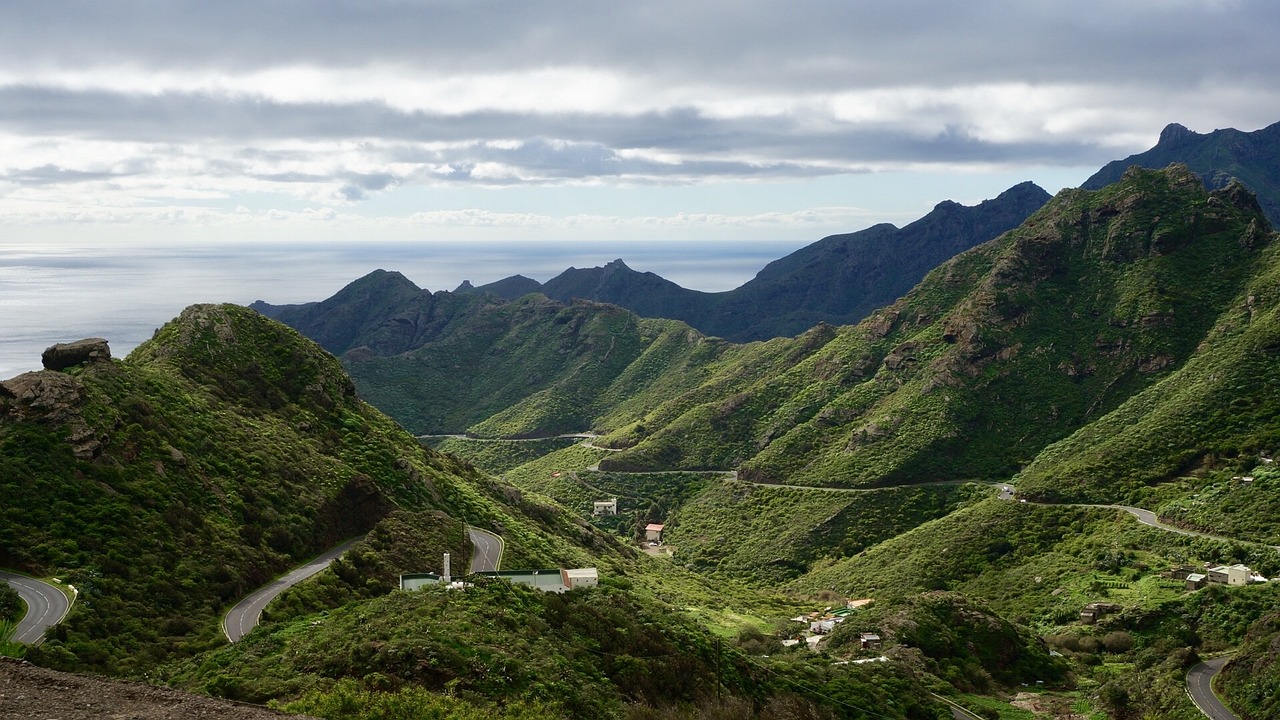
- Asesor Canario
- Sep 26, 2023
- Uncategorized
- 0 Comments
There are numerous compelling reasons to visit Gran Canaria, one of the seven main islands in the Canary Archipelago of Spain.
Numerous compelling reasons to visit Gran Canaria
Here are some of the top reasons to explore this beautiful island:
Exceptional climate: Gran Canaria is renowned for its mild climate year-round. With over 300 days of sunshine annually, it’s a perfect destination in any season.
Spectacular beaches: Gran Canaria boasts stunning and diverse beaches. From the golden dunes of Maspalomas to hidden coves on the north coast, there’s a beach for every taste.
Diverse nature: The island is a paradise for nature enthusiasts. You can explore lush forests in the north, deserts in the south, and majestic mountains in the center. The Garajonay National Park is a UNESCO World Heritage site.
Water sports: Gran Canaria offers excellent opportunities for water sports such as surfing, windsurfing, kiteboarding, and diving. Conditions are ideal for both beginners and experts.
Culture and tradition: Historic cities like Las Palmas de Gran Canaria offer a rich Canarian history and culture. Explore ancient churches, museums, and local festivals.
Cuisine: Food in Gran Canaria is a culinary delight. Try traditional dishes like mojo, papas arrugadas (wrinkled potatoes), or fresh seafood at local restaurants.
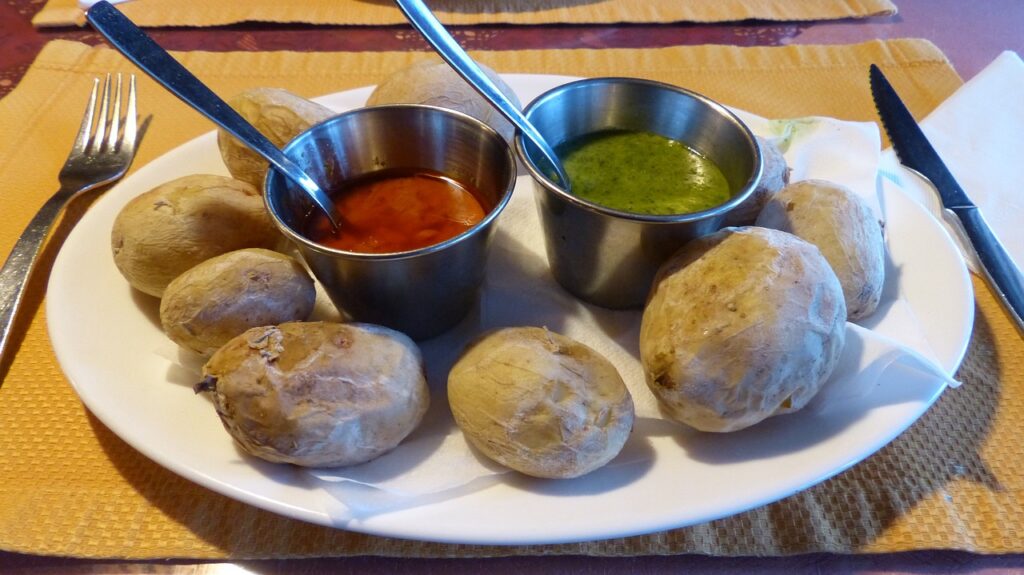
Vibrant nightlife: Tourist towns like Playa del Inglés and Puerto Rico have lively nightlife with bars, clubs, and live entertainment.
Shopping: Gran Canaria is a shopping paradise with a variety of malls and local markets where you can find everything from local products to international brands.
Relaxation: If you’re seeking a tranquil retreat, the island also offers relaxation spots like spas and wellness retreats.
Accessibility: Gran Canaria is easily accessible from Europe and other parts of Spain, with regular flights and maritime connections.
These are just a few of the reasons why Gran Canaria is a top choice for travelers looking for a unique experience that combines natural beauty, rich culture, and exciting activities.
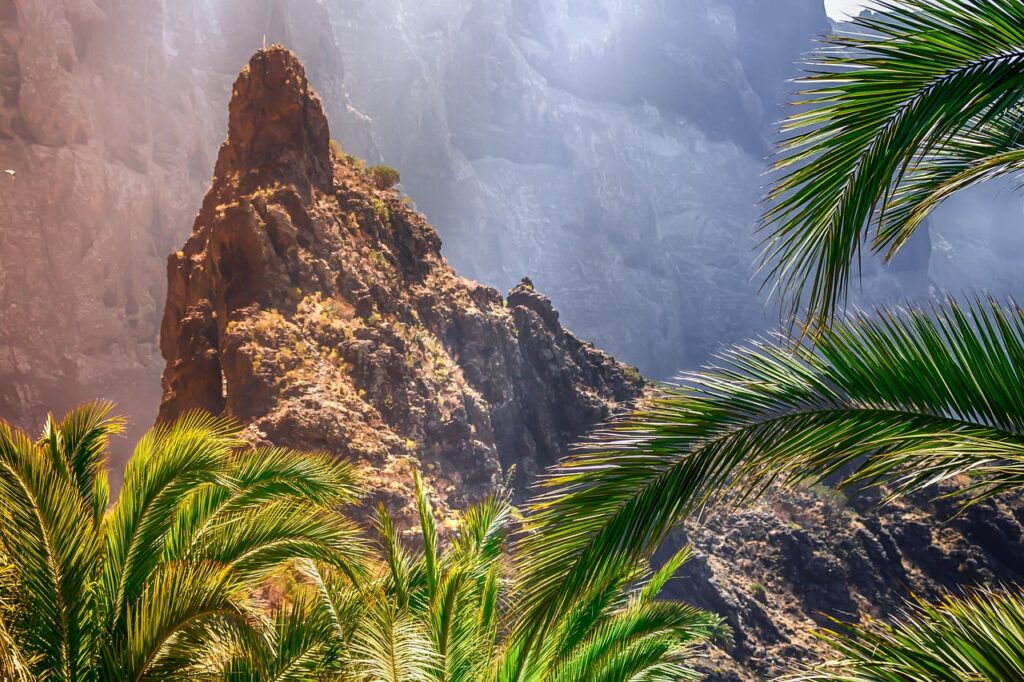
1 Why is Gran Canaria a safe destination for tourists?
Gran Canaria is considered a safe destination for tourists for several reasons:
Low Crime Rate: Gran Canaria, like the rest of the Canary Islands, generally has a low crime rate compared to many other tourist destinations. Violent crime is rare, and petty crimes like pickpocketing and theft can be avoided with basic precautions.
Tourism-Oriented Infrastructure: The island’s economy heavily relies on tourism, which has led to the development of a well-established infrastructure to cater to visitors. This includes well-maintained hotels, resorts, transportation, and tourist-friendly services.
Tourist Police and Security: Local authorities often prioritize the safety of tourists. Many tourist areas have dedicated tourist police who are available to assist visitors and maintain a safe environment.
Stable Political Environment: The Canary Islands, including Gran Canaria, are part of Spain, a stable and well-governed country with a strong rule of law.
Health and Medical Facilities: Gran Canaria has access to modern healthcare facilities, hospitals, and clinics, ensuring that tourists can receive medical attention if needed.
Natural Hazards Awareness: While the Canary Islands are located in a seismically active region due to their volcanic origins, the local authorities have developed comprehensive disaster management and early warning systems to mitigate the impact of potential natural hazards.
Tourist-Friendly Culture: The people of Gran Canaria are accustomed to tourists and often exhibit a welcoming and friendly attitude. The local culture promotes tourism as a major source of income, fostering an environment where visitors are respected and well-treated.
Environmental Health and Safety: The island takes measures to ensure that its beaches, public areas, and natural attractions are well-maintained and safe for visitors. Lifeguards are often present on popular beaches to enhance safety.
Well-Regulated Activities: Water sports, excursions, and other tourist activities are often regulated and monitored to ensure the safety of participants.
Consistent Tourism: The Canary Islands, including Gran Canaria, have been popular tourist destinations for decades. Their consistent appeal to tourists suggests a level of safety and positive experiences that continue to draw visitors.
Despite these points, it’s important for travelers to exercise general caution and follow safety guidelines as they would in any destination. Staying aware of your surroundings, taking care of personal belongings, and following any local advisories will contribute to a safe and enjoyable experience while visiting Gran Canaria.
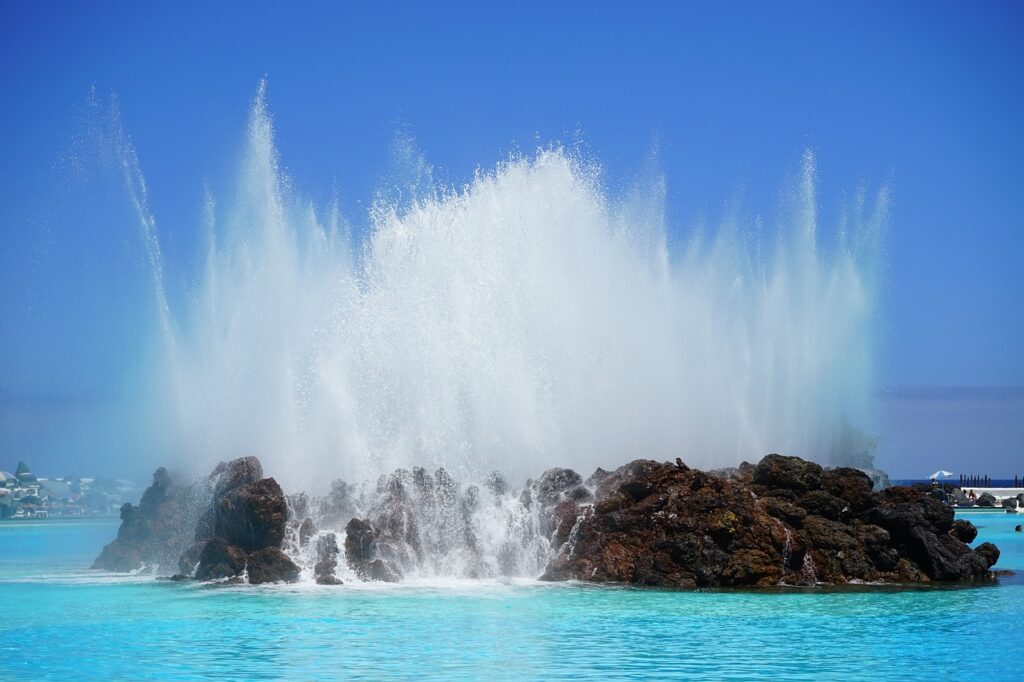
2 Comparison between the Canary Islands and the typical Mediterranean destinations during the winter
Both the Canary Islands and Mediterranean destinations offer unique experiences during the winter months, but they have distinct characteristics that can influence travelers’ preferences. Here’s a comparison between the two:
Weather and Climate:
Canary Islands: The Canary Islands, located off the northwest coast of Africa, enjoy a mild subtropical climate year-round. Winters are pleasantly warm, with temperatures ranging from 18°C to 24°C (64°F to 75°F). Rainfall is relatively low, and the islands boast plenty of sunshine, making them an appealing escape from colder regions.
Mediterranean: Mediterranean destinations can vary in climate during the winter. Southern Mediterranean areas like the coasts of Spain, southern Italy, and Greece tend to have milder winters with temperatures around 10°C to 15°C (50°F to 59°F). However, northern Mediterranean regions can experience cooler temperatures and occasional rain.
Activities and Attractions:
Canary Islands: The Canary Islands offer a mix of natural beauty, outdoor activities, and cultural experiences. Visitors can explore volcanic landscapes, relax on stunning beaches, enjoy water sports, hike in national parks, and explore local markets and historic sites.
Mediterranean: Mediterranean destinations provide a rich historical and cultural experience. Travelers can explore ancient ruins, historic cities, and picturesque villages. While beach activities might be limited due to cooler temperatures, there are opportunities for sightseeing, culinary exploration, and indoor attractions like museums and art galleries.
Crowds and Tourism:
Canary Islands: The Canary Islands are a popular winter destination, attracting tourists seeking warmth and outdoor activities. While there is tourism, the islands might be less crowded than during the peak summer season.
Mediterranean: Some Mediterranean destinations experience a decrease in tourism during the winter, leading to fewer crowds at popular tourist sites. However, larger cities may still see a steady flow of visitors due to their year-round attractions.
Cost:
Canary Islands: Travel and accommodation costs in the Canary Islands during the winter months can be more affordable than during peak summer periods.
Mediterranean: Prices for travel and accommodation in Mediterranean destinations might also be lower in the winter, although this can vary depending on the specific location and its popularity during the off-season.
Accessibility:
Canary Islands: The Canary Islands are easily accessible by air from major European cities, making them a convenient option for a winter getaway.
Mediterranean: Mediterranean destinations are well-connected by air, but some smaller islands or remote areas might have limited flight options during the winter.
Conclusion:
Choosing between the Canary Islands and Mediterranean destinations during the winter depends on your preferences. If you’re seeking milder and more predictable weather, along with outdoor activities and beach relaxation, the Canary Islands might be your ideal choice. On the other hand, if you’re interested in historical and cultural exploration, and don’t mind cooler temperatures, the Mediterranean offers a rich and diverse experience.
3 The cultural offer on Gran Canaria
Gran Canaria, one of the Canary Islands, offers a rich and diverse cultural experience that reflects its historical, geographical, and social influences. Here are some of the cultural offerings you can explore on the island:
Historical Sites:
Vegueta: The historic district of Las Palmas de Gran Canaria, Vegueta, is a UNESCO World Heritage Site. It features charming cobblestone streets, colonial architecture, and landmarks like the Cathedral of Santa Ana and Casa de Colón (Columbus House).
Cueva Pintada: An archaeological site in Gáldar, Cueva Pintada contains intricate ancient Guanche (indigenous Canary Islands people) rock art and offers insights into the island’s pre-Spanish history.
Museums and Galleries:
Museo Canario: This museum in Las Palmas preserves and showcases the island’s archaeological and ethnographic heritage, including artifacts from the Guanche civilization.
CAAM (Atlantic Center of Modern Art): Located in Las Palmas, CAAM features contemporary art exhibitions, workshops, and events that reflect the cultural diversity of the Canary Islands.
Carnivals and Festivals:
Carnaval de Las Palmas: One of the biggest carnival celebrations in Spain, this colorful event features parades, costumes, live music, and dance performances.
Fiesta de San Juan: Celebrated in June, this festival marks the summer solstice with bonfires, music, and beach gatherings.
Traditional Music and Dance:
Timple: The timple is a traditional Canarian string instrument that plays a significant role in the island’s music. Enjoy local performances that incorporate timple playing and traditional folk songs.
Folkloric Performances: Folk music and dance performances often highlight Canarian traditions, including lively performances like the Isa dance.
Culinary Delights:
Canarian Cuisine: Savor the flavors of Canarian cuisine, known for dishes like papas arrugadas (wrinkled potatoes), mojo sauces, and fresh seafood.
Mercado de Vegueta: Visit this market in Las Palmas to experience the local food scene, from fresh produce to Canarian delicacies.
Local Crafts:
Embroidery and Lacework: Discover intricately designed traditional Canarian lacework and embroidery, often used in clothing and home decorations.
Pottery: Explore local pottery studios that create unique ceramics influenced by indigenous and Spanish styles.
Outdoor Cultural Spaces:
Parque Doramas: This urban park in Las Palmas features sculptures, gardens, and a serene atmosphere, offering a place to relax and enjoy nature.
Auditorio Alfredo Kraus: This modern concert hall hosts a variety of cultural events, including classical music concerts, theater performances, and more.
Gastronomic Festivals:
Fiesta del Queso (Cheese Festival): Celebrated in various towns, this festival showcases the island’s cheese-making tradition and allows visitors to sample different varieties of local cheeses.
These are just a few examples of the cultural offerings on Gran Canaria. The island’s blend of indigenous, Spanish, and African influences creates a unique and vibrant cultural scene that’s well worth exploring.
4 Best beaches on Gran Canaria and water temperature
Gran Canaria boasts a range of stunning beaches, each offering its own unique appeal. The water temperature in the Canary Islands remains relatively mild, making them ideal for beachgoers throughout the year. Here are some of the best beaches on Gran Canaria along with approximate water temperatures:
Playa de las Canteras: Located in Las Palmas, this city beach is known for its vibrant atmosphere, golden sand, and calm waters. Water temperatures typically range from around 19°C to 24°C (66°F to 75°F).
Maspalomas Beach: Situated in the south, Maspalomas Beach is famous for its extensive sand dunes and crystal-clear waters. The water temperature here usually hovers between 20°C and 24°C (68°F to 75°F).
Playa del Inglés: Adjacent to Maspalomas Beach, Playa del Inglés is another popular choice with lively surroundings. Water temperatures are similar to those of Maspalomas Beach.
Playa de Amadores: Near Puerto Rico, this beach features man-made white sand and tranquil waters. Water temperatures range from approximately 20°C to 24°C (68°F to 75°F).
Playa de Puerto Rico: With a crescent shape and sheltered waters, this beach is great for swimming. Water temperatures are similar to those of nearby beaches.
Playa de Mogán: Often referred to as “Little Venice,” this beach in Puerto de Mogán is charming with its colorful buildings along the waterfront. Water temperatures are usually between 20°C and 24°C (68°F to 75°F).
Playa de San Agustín: Offering a quieter atmosphere, this beach has darker sands and water temperatures that range from around 20°C to 24°C (68°F to 75°F).
Playa de Guigui: Accessible via a hike or boat ride, this secluded beach provides a unique experience. Water temperatures are similar to other beaches on the island.
Bear in mind that water temperatures can vary depending on the season and weather conditions. Nevertheless, the Canary Islands generally enjoy mild water temperatures suitable for swimming and water sports year-round.
Before your visit, it’s advisable to check current weather forecasts and water temperatures to ensure a pleasant and enjoyable beach experience during your stay on Gran Canaria.
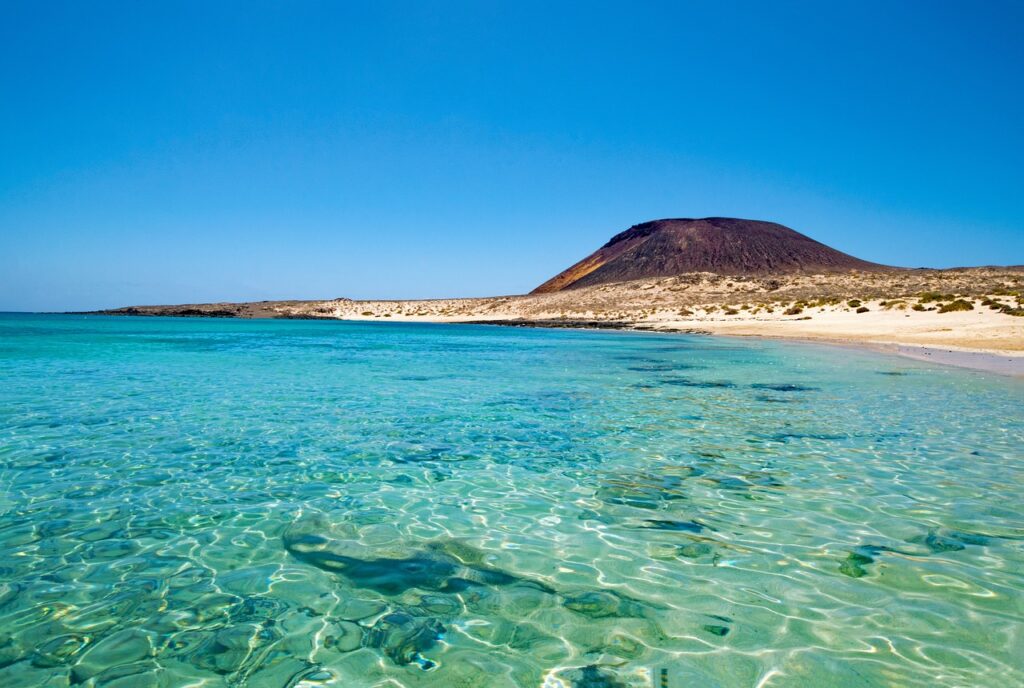
5 Why there are so many European residents in Gran Canaria?
Gran Canaria, along with the other Canary Islands, is a popular destination for European residents for several reasons:
Climate: The Canary Islands have a mild subtropical climate with warm temperatures throughout the year. This appeals to Europeans seeking to escape colder climates in their home countries.
Winter Retreat: The islands’ pleasant winter weather attracts “snowbirds” – individuals who spend the colder months in warmer destinations. Many Europeans choose Gran Canaria for extended stays during the winter.
Accessibility: The Canary Islands are relatively close to Europe, making them easily accessible for short trips or extended stays. Flights from major European cities to the Canary Islands are convenient and affordable.
Cultural Diversity: The Canary Islands have a diverse cultural landscape due to their historical connections with various cultures, including indigenous Guanche, Spanish, and African influences. This diversity can be appealing to Europeans seeking unique cultural experiences.
Language: Spanish is widely spoken in the Canary Islands, which is beneficial for Europeans who often have some familiarity with the language or wish to learn it.
Retirement and Expat Communities: Many European retirees and expatriates choose the Canary Islands for their retirement or as a place to establish a new life. The islands offer a relaxed lifestyle, good healthcare, and a comfortable cost of living.
Tourism Infrastructure: The islands have well-developed tourism infrastructure, including quality accommodations, restaurants, entertainment, and outdoor activities, which make them appealing to residents.
Nature and Outdoor Activities: The Canary Islands offer diverse landscapes, from beaches to mountains and forests. This attracts nature enthusiasts and outdoor adventurers who enjoy activities like hiking, surfing, and exploring.
Tax Benefits: The Canary Islands offer certain tax incentives for residents, which can make it an attractive destination for individuals with financial interests.
Job Opportunities: While tourism is a major industry, there are also opportunities for employment in various sectors, including hospitality, services, and more.
Safety and Quality of Life: The Canary Islands have a reputation for safety, a relaxed pace of life, and a welcoming atmosphere. These factors contribute to a high quality of life that appeals to many European residents.
Overall, the combination of favorable climate, accessible location, cultural diversity, and lifestyle options makes Gran Canaria and the Canary Islands an appealing choice for many European residents seeking a change of scenery, a warmer climate, or a new way of life.
6 Sports events on Gran Canaria
Gran Canaria hosts a variety of sports events throughout the year, ranging from local competitions to international tournaments. The island’s pleasant climate and diverse landscapes make it an ideal location for various outdoor sports. Here are some of the sports events you might find on Gran Canaria:
Gran Canaria Marathon: Held annually, the Gran Canaria Marathon attracts runners from around the world. The route takes participants through picturesque landscapes, including the coastline and rural areas.
Ironman 70.3: The Ironman 70.3 Gran Canaria is a triathlon event that includes swimming, cycling, and running. The course showcases the island’s diverse terrain and challenging landscapes.
Gran Canaria Bike Week: This cycling event attracts cyclists of all levels. Participants can explore the island’s scenic routes and challenging climbs.
Gran Canaria Windsurfing and Kiteboarding World Cup: The island’s strong winds and excellent conditions make it a perfect host for windsurfing and kiteboarding competitions, attracting top athletes from around the world.
Basketball and Volleyball Tournaments: Gran Canaria hosts various basketball and volleyball tournaments, often featuring international teams. These events showcase the island’s enthusiasm for team sports.
Golf Tournaments: Gran Canaria has several golf courses, and the island hosts golf tournaments for enthusiasts and professionals alike.
Surfing Competitions: With its consistent waves and warm waters, Gran Canaria is a popular spot for surfing events, including international competitions and local contests.
Trail Running Races: The island’s varied landscapes offer opportunities for trail running events. Competitions range from shorter races to more challenging ultra-distance events.
Sailing Regattas: The Canary Islands are a hub for sailing events due to their strategic location and favorable winds. Gran Canaria hosts sailing regattas that attract participants from different parts of the world.
Swimming Competitions: The island’s clear waters make it a suitable location for open water swimming competitions and triathlon swimming segments.
Soccer and Football Tournaments: Soccer (football) is a popular sport on the island, and various local and regional tournaments are held throughout the year.
Keep in mind that the schedule of sports events on Gran Canaria can vary from year to year. If you’re planning to participate or watch any specific event, it’s recommended to check local event calendars or sports organizations for the most up-to-date information.
7 The culinary offer on Gran Canaria
Gran Canaria offers a rich culinary scene that reflects the island’s diverse cultural influences and natural resources. From traditional Canarian dishes to international cuisine, you’ll find a wide range of options to satisfy your taste buds. Here are some highlights of the culinary offerings on Gran Canaria:
Mojo Sauces: Mojo sauces are a staple in Canarian cuisine. These flavorful sauces come in various versions, including red (mojo rojo) and green (mojo verde). They are often served with potatoes, meat, fish, and vegetables.
Papas Arrugadas: These “wrinkled potatoes” are a famous Canarian side dish. They are small potatoes boiled in heavily salted water until they wrinkle, and they are typically served with mojo sauce.
Gofio: Gofio is a traditional Canarian flour made from roasted grains like wheat, barley, or maize. It’s used in various dishes, from porridge to desserts.
Fresh Seafood: With its coastal location, Gran Canaria offers a variety of fresh seafood dishes. Try the local fish like vieja (parrotfish) or cherne (wreckfish).
Ropa Vieja: This dish translates to “old clothes” and consists of shredded meat (usually beef or chicken) cooked with vegetables and a flavorful sauce.
Sancocho: Sancocho is a Canarian fish stew made with salted fish, potatoes, sweet potatoes, and mojo sauce.
Cheese: Gran Canaria is known for its delicious cheeses, including queso de flor (flower cheese) and queso de Guía (Guía cheese).
Tropical Fruits: Due to its climate, the island produces a variety of tropical fruits like bananas, mangoes, papayas, and avocados. You’ll find these fruits in local markets and dishes.
Tapas and Pintxos: Many restaurants and bars offer a wide range of tapas and pintxos, small appetizers that allow you to sample different flavors.
Wines and Spirits: Gran Canaria has its own wine-producing regions. Try local wines and spirits, such as Ron Miel (honey rum).
International Cuisine: Beyond Canarian dishes, you’ll find a diverse array of international restaurants, including Italian, Mediterranean, Asian, and more.
Desserts: Don’t miss out on trying traditional Canarian desserts like bienmesabe (almond cream) and frangollo (sweet corn dessert).
Whether you’re dining in local eateries, beachside restaurants, or upscale establishments, Gran Canaria’s culinary scene offers a delightful mix of flavors and experiences. Exploring the island’s markets, trying traditional dishes, and enjoying the fusion of cultural influences will provide a memorable gastronomic journey.

8 Ferries to the Canary Islands
The Canary Islands are well-connected by a network of ferry services that provide transportation between the different islands as well as to and from the mainland of Spain and other nearby destinations. Ferries offer a convenient way to explore the beauty and diversity of the archipelago. Here’s an overview of ferry services in the Canary Islands:
1. Inter-Island Ferries:
Ferries operate between various Canary Islands, allowing residents and tourists to easily hop from one island to another.
The most popular ferry routes are between Tenerife and Gran Canaria, Lanzarote and Fuerteventura, and Gran Canaria and La Palma, among others.
2. Mainland Spain to Canary Islands:
There are ferry routes connecting the Canary Islands to mainland Spain. The most common route is from the Port of Huelva to the Port of Las Palmas on Gran Canaria.
3. North Africa to Canary Islands:
Ferries also connect the Canary Islands to cities on the northern coast of Africa, such as Agadir and Dakhla in Morocco.
4. Ferry Operators:
Naviera Armas: One of the main ferry operators in the Canary Islands, offering connections between multiple islands and to mainland Spain.
Fred. Olsen Express: Another prominent ferry company with routes between the islands and to mainland Spain.
Trasmediterranea: This company offers ferry services between the Canary Islands and the Spanish mainland.
Líneas Romero: A local ferry company providing connections between several Canary Islands, particularly La Gomera.
5. Ferry Types:
Ferries range from regular passenger ferries to high-speed catamarans. The type of ferry you choose may affect travel times and comfort.
6. Schedules and Tickets:
Ferry schedules can vary depending on the route, season, and operator. It’s recommended to check the ferry company’s official website for the most up-to-date information on schedules, routes, and ticket prices.
Tickets can usually be purchased online, at ferry terminals, or through travel agencies.
7. Travel Time:
Travel times between the islands vary. Shorter routes, such as between Tenerife and Gran Canaria, can take around 1 to 2 hours, while longer routes to mainland Spain can take several hours to a day.
Ferry services offer an excellent way to experience the stunning landscapes, vibrant culture, and unique charm of each Canary Island. Make sure to plan your travel in advance, especially during peak travel seasons, and check for any updates or changes to schedules.
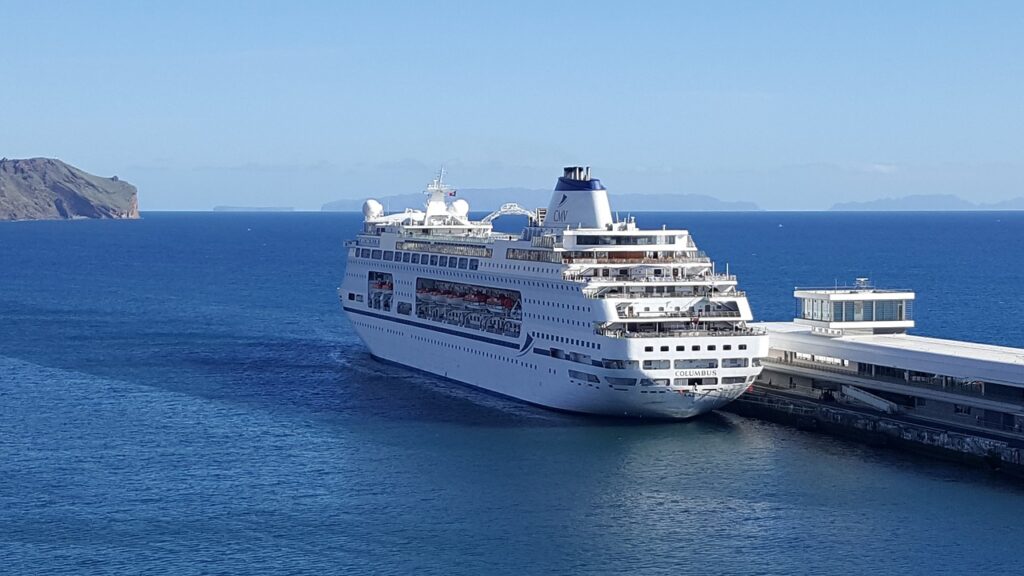
9 Night life in Gran Canaria
Gran Canaria offers a vibrant and varied nightlife scene that caters to different tastes and preferences. Whether you’re looking for lively clubs, cozy bars, live music venues, or cultural events, the island has something for everyone. Here’s an overview of the nightlife options on Gran Canaria:
Las Palmas de Gran Canaria:
As the largest city on the island, Las Palmas offers a diverse nightlife. The Vegueta district has numerous bars and restaurants where you can enjoy drinks and tapas.
The Santa Catalina area is known for its nightclubs and dance floors, offering a mix of music genres to dance the night away.
Maspalomas and Playa del Inglés:
These areas in the south of the island are popular for their vibrant nightlife. You’ll find a variety of bars, clubs, and live music venues.
Yumbo Centrum, a large shopping and entertainment complex, is a hub for nightlife activities, with bars, clubs, and drag shows.
Puerto Rico:
Puerto Rico is known for its energetic nightlife, particularly around the Puerto Rico Shopping Center. Here you’ll find a range of bars and discos.
Live Music and Performances:
Many bars and clubs across the island feature live music performances, including rock, jazz, flamenco, and traditional Canarian music.
Beachfront Bars:
Along the coast, you’ll find beachfront bars and chill-out lounges where you can enjoy a relaxing atmosphere, often with stunning sea views.
Cultural Events:
Gran Canaria hosts various cultural events, including theater performances, concerts, and outdoor festivals that often continue into the evening.
Gay-Friendly Nightlife:
Gran Canaria is known for its LGBTQ+ friendly atmosphere. The Yumbo Centrum in Playa del Inglés is a popular spot for gay-friendly nightlife.
Casinos:
If you’re interested in gaming and entertainment, Gran Canaria has several casinos where you can try your luck at various games.
Terrace Bars and Cafés:
Enjoy the warm evenings by relaxing on terrace bars and cafés that offer a laid-back atmosphere and good company.
Cocktail Bars and Pubs:
There’s a wide range of cocktail bars and pubs offering an array of drinks, from classic cocktails to local specialties.
Remember that the nightlife scene can vary depending on the season and local events. Many venues come alive later in the evening, often starting around midnight and continuing into the early morning hours. Always check local event listings and recommendations to find the latest and most suitable nightlife options during your visit.
10 Gran Canaria as a business hub
Gran Canaria is emerging as a dynamic business hub, attracting entrepreneurs, startups, and businesses in various industries. Its strategic location, economic incentives, and infrastructure make it an appealing destination for those looking to establish a business presence. Here are some reasons why Gran Canaria is gaining recognition as a business hub:
Strategic Location:
Gran Canaria’s geographical location between Europe, Africa, and the Americas positions it as a crossroads for international business opportunities and trade.
Tax Incentives:
The Canary Islands, including Gran Canaria, offer a low corporate tax rate and other tax incentives to attract foreign investment and promote economic development.
Special Economic Zone:
Gran Canaria is part of the ZEC (Canary Islands Special Zone), which provides tax advantages and other benefits to businesses operating within the zone.
Infrastructure:
The island has modern infrastructure, including well-equipped office spaces, coworking facilities, and technology parks that cater to businesses of all sizes.
Connectivity:
Gran Canaria has excellent connectivity with regular flights to major European cities, making it convenient for business travelers and facilitating international business relations.
Startup Ecosystem:
The island is fostering a growing startup ecosystem, with incubators, accelerators, and networking events that support entrepreneurship and innovation.
Renewable Energy Initiatives:
Gran Canaria is actively promoting sustainable practices, making it an attractive destination for businesses focused on renewable energy and eco-friendly solutions.
Tourism Industry:
The island’s thriving tourism industry provides opportunities for businesses in hospitality, tourism services, and related sectors.
Digital and Creative Industries:
Gran Canaria is becoming a hub for digital and creative industries, including design, media production, and software development.
Research and Education:
The University of Las Palmas de Gran Canaria and research centers contribute to a knowledge-based economy, fostering innovation and talent development.
Quality of Life:
The pleasant climate, beautiful landscapes, and relaxed lifestyle of Gran Canaria make it an attractive location for professionals seeking a high quality of life.
Multilingual Workforce:
Many locals are fluent in multiple languages, including English, which is beneficial for international business communication.
While Gran Canaria is steadily establishing itself as a business hub, it’s important to conduct thorough research and seek local advice when considering business opportunities on the island. As with any business endeavor, understanding the local regulations, market dynamics, and cultural aspects is essential for success.
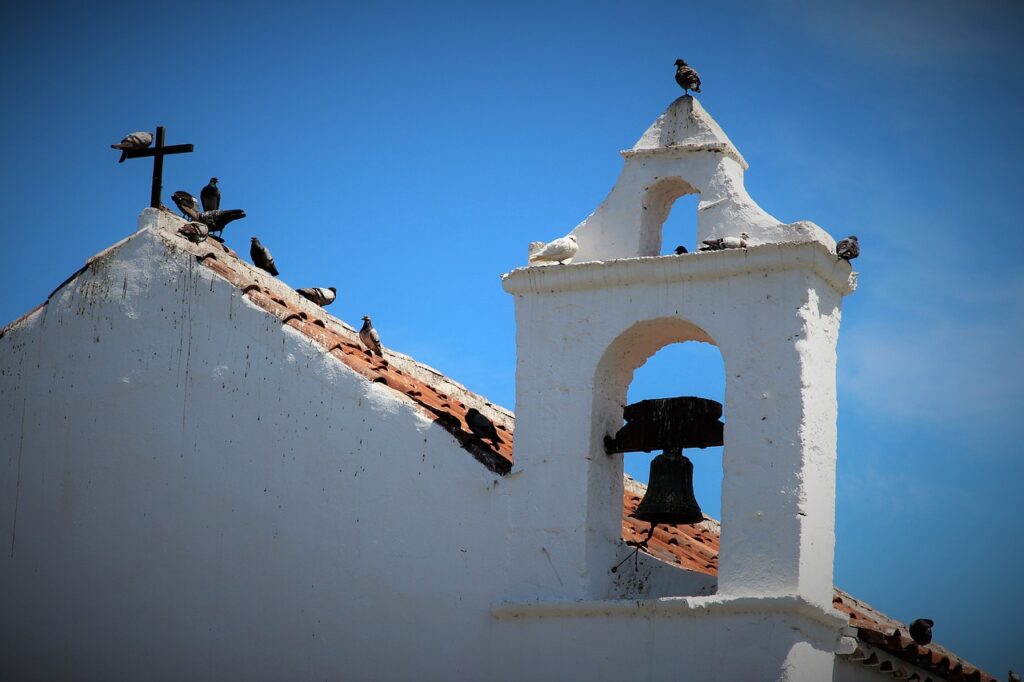
11 Foreign language schools on Gran Canaria
Gran Canaria offers a variety of foreign language schools catering to different age groups, proficiency levels, and languages. Whether you’re interested in learning Spanish, English, or other languages, you’ll find options to suit your needs. Here are some foreign language schools on Gran Canaria:
Escuela Oficial de Idiomas (Official School of Languages):
Offers courses in Spanish for non-native speakers and other languages for Spanish speakers.
Provides comprehensive language programs with structured curriculum and recognized certifications.
Academia Iria Flavia:
Offers Spanish courses for international students at different proficiency levels.
Provides a variety of cultural activities to immerse students in local culture.
Catholic University of Valencia – Gran Canaria Campus:
Offers Spanish language programs for international students.
Provides a supportive learning environment and cultural experiences.
Berlitz Language Center:
Offers language courses in English, Spanish, and other languages.
Provides a variety of course formats, including group classes and private lessons.
The British School of Gran Canaria:
Offers English language education for students of various ages.
Provides a British curriculum and prepares students for internationally recognized exams.
Cambridge School:
Offers English language courses for all ages, from children to adults.
Provides a range of courses, including general English, exam preparation, and business English.
EF Education First:
Offers language courses in English, Spanish, and other languages.
Provides a variety of programs, including language immersion, academic courses, and cultural experiences.
King´s College:
Offers English language education for students from early years to secondary level.
Provides a British curriculum and prepares students for exams such as IGCSE and A-levels.
Academia Canarias:
Offers Spanish courses for international students.
Provides both group classes and private lessons tailored to students’ needs.
TANDEM Escuela Internacional:
Offers Spanish courses for foreigners of all levels.
Focuses on interactive teaching methods and cultural integration.
When choosing a language school, consider factors such as the languages offered, the curriculum, class sizes, teaching methods, location, and the availability of certifications or exams. Additionally, read reviews, visit the school if possible, and inquire about any special programs or cultural activities they offer. It’s important to find a school that aligns with your language learning goals and preferences.
Gran Canaria is home to several international schools that provide education in English and other languages, following international curricula. These schools cater to the expatriate community and offer a diverse and high-quality education. Here are some international schools on Gran Canaria:
The British School of Gran Canaria:
Offers a British curriculum from Early Years to Sixth Form (ages 3 to 18).
Prepares students for internationally recognized exams such as IGCSE and A-levels.
Provides a range of extracurricular activities and sports.
Oakley College:
Provides British education following the English National Curriculum.
Offers classes from Early Years to Sixth Form.
Emphasizes holistic development and offers a wide range of subjects and activities.
Colegio Arenas Internacional:
Offers the International Baccalaureate (IB) program.
Provides education from Early Years to Secondary levels.
Emphasizes multiculturalism and international-mindedness.
Colegio Hispano Inglés:
Provides education in both Spanish and English.
Offers the International Baccalaureate (IB) program.
Focuses on academic excellence, values, and international perspectives.
American School Las Palmas:
Offers an American curriculum from pre-kindergarten to high school.
Provides a diverse learning environment and extracurricular activities.
Colegio Arenas Sur:
Offers bilingual education in English and Spanish.
Provides education from Early Years to Secondary levels.
Emphasizes language learning and international education.
TASIS The American School in Switzerland – Dorado Campus:
Offers the American High School Diploma and the International Baccalaureate (IB) program.
Provides a multicultural environment with a focus on academics and character development.
Colegio Canterbury:
Offers bilingual education in English and Spanish.
Provides education from Early Years to Secondary levels.
Focuses on academic excellence and character formation.
Colegio Alemán de Las Palmas – Deutsche Schule Las Palmas:
Offers education from Kindergarten to Abitur (German high school diploma).
Provides a curriculum aligned with the German educational system.
Teaches subjects in both German and Spanish languages, allowing students to develop proficiency in both languages.
Focuses on academic excellence, cultural integration, and international-mindedness.
Offers a variety of extracurricular activities, including sports, arts, and cultural events.
Provides a multicultural and diverse learning environment.
Offers a supportive community for German-speaking families and expatriates on the island.
Prepares students for the German Abitur, which is recognized for university admissions in Germany and other countries.
It’s important to note that schools and their offerings may change, so I recommend visiting the official website of the Colegio Alemán de Las Palmas or contacting the school directly for the most up-to-date information about their programs, admissions, and curriculum. If you’re considering enrolling your child in the German School, you can inquire about admissions procedures, academic requirements, and any other relevant details you might need to make an informed decision.
When choosing an international school, consider factors such as the curriculum, accreditations, faculty qualifications, facilities, extracurricular activities, and the overall educational philosophy. It’s recommended to visit the schools if possible and gather information to ensure that the chosen school aligns with your child’s educational needs and your family’s preferences.





